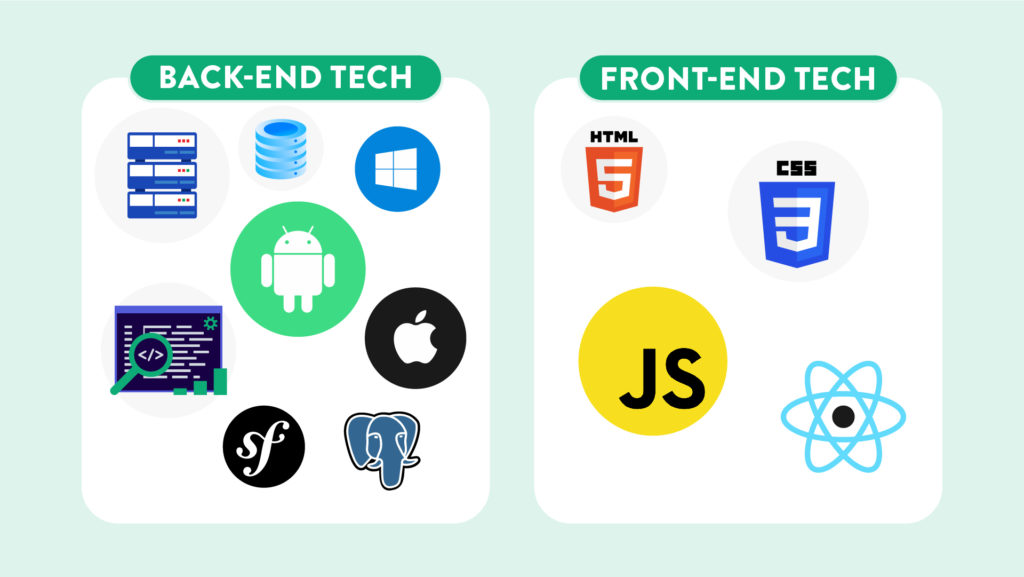The Complete Guide to Choosing the Right Tech Stack for Your Next Project


Introduction
Choosing the right tech stack for your next project can make or break its success. With so many programming languages, frameworks, libraries, and tools available, it can feel overwhelming. For freelance developers, selecting the ideal tech stack means balancing project requirements, client needs, performance considerations, and long-term maintenance. In this guide, we break down how to make the best decision for your projects.
Keywords: tech stack guide, choosing tech stack, software development stack
The first step in choosing a tech stack is understanding the scope of your project. Is it a web application, mobile app, or a desktop application? Consider the specific features needed, user base, scalability, and security requirements. By clarifying your project goals, you can narrow down potential technologies.
Front-end development determines what users see and interact with, while back-end development handles server-side logic, data management, and application workflows. For the front end, popular options include React, Angular, and Vue.js. On the back end, common choices include Node.js, Python with Django or Flask, and Ruby on Rails. Selecting the right tech stack often depends on the complexity of user interactions and the amount of server-side logic required.
Frameworks and libraries speed up development and offer built-in functionality for common tasks. Consider industry standards like React for the front end and Express for the back end, as well as emerging tools that match your project’s unique demands. Remember to prioritize frameworks with strong community support and active development.
Keywords: software development stack, coding trends, scalability considerations
Scalability is critical for projects that expect rapid growth or high user traffic. Tech stacks like MERN (MongoDB, Express.js, React, Node.js) offer flexibility and the ability to handle large data volumes. Meanwhile, static site generators like Next.js optimize performance for content-heavy applications. Always test how your tech stack performs under varying workloads and growth scenarios.
Your client’s budget and desired features can impact your tech stack selection. Some tech stacks are costlier due to licensing fees, hosting needs, or specific hardware requirements. Communicate openly with your client about potential costs tied to different technologies.
Freelance developers often work solo or in small teams, so it’s essential to assess your proficiency with the stack you’re considering. While it’s tempting to experiment with the latest technology, leveraging a familiar stack often results in faster delivery and better code quality. Be honest about your strengths and areas for growth when choosing a stack.
Keywords: choosing tech stack, security best practices
Security must be top of mind when choosing a tech stack. Ensure that the stack you select follows industry security standards and can be patched or updated easily. Use frameworks and tools with built-in security features to minimize common vulnerabilities like cross-site scripting (XSS) and SQL injection.
A vibrant community and solid documentation can be lifesavers when you face development challenges. Open-source frameworks, well-maintained repositories, and active forums provide reliable support and reduce the time spent troubleshooting. Before finalizing your stack, explore developer forums to understand community involvement.
Keywords: tech stack guide, integration and compatibility
Consider how your chosen technologies will interact with third-party services, databases, and APIs. A good tech stack allows for easy integration with tools your clients rely on, such as CRM systems, payment gateways, and analytics platforms. The more flexible and compatible your stack, the more easily you can adapt to changes or new feature requests.
Choosing the right tech stack is about finding the best balance between project needs, budget constraints, your expertise, and performance goals. By understanding your project’s requirements, evaluating options with scalability and security in mind, and leveraging the right frameworks, you’ll set yourself up for success. As technology evolves, staying informed about software development trends will help you make the best choices for your projects and your clients.